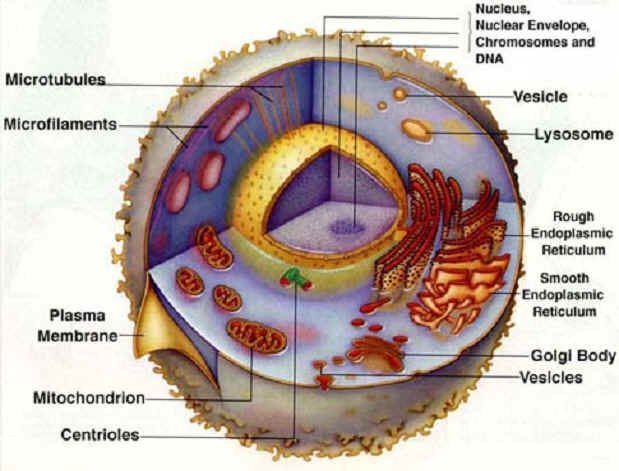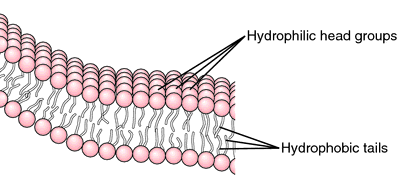2. Eukarya-what are we made of?
In last article(biology the basics) we spoke about the three types of cells that form the living part of nature- Archaea, Bacteria and Eukarya. Now I want to focus on the most evolutionary advanced- Eukarya. All living things we commonly see every day like trees, dogs etc. is formed by Eukaryotic cells. We will talk about the most important structures and the ongoing processes. Some of these processes are very complex, therefore here I will just write the basics but do not worry I will write more sophisticated articles about the most interesting later.

Eukaryotic cells are surrounded by cytoplasmic membrane. Inside the cytoplasmic membrane is cytoplasm it contains everything that is inside the cell. Cytoplasmic membrane is a lipid bilayer it is formed by small subunits- phospholipids. They have two different sites hydrophilic which prefers polar (in water soluble) molecules hydrophobic that prefers nonpolar (in lipid soluble) molecules. Because of two different binding preferences in water environment they connect with each other to create the bilayer. Hydrophobic sites are inside of the bilayer and hydrophilic outside. This formation allows very specific attributes, it determines what can pass through in or out of the cell. It uses receptors to communicate with other cells, analyze cell surroundings, bind specific substances and many more. Other molecules like cholesterol are also present in cytoplasmic membrane. All membranes enclosing some of the organelles are formed by lipid bilayer.

Plant cells have few specific organelles not found in animal cells.
Cell wall: it is another layer around the cytoplasmic membrane made mostly from cellulose, it is not a part of the cytoplasmic membrane, it protects the cell and determines shape
Vacuole: membrane-enclosed, in mature plant cells it fills most of the intracellular (inside cytoplasmic membrane) space, it absorbs water creating pressure on cell wall
Plastids: there are different types of plastids, chloroplasts are the most important they contain pigments responsible for photosynthesis
Following organelles are present in almost every Eukaryotic cell
Ribosome: small structure in cytoplasm (not really an organelle), free or connected to endoplasmic reticulum, it binds RNA translates it into protein
Membrane-enclosed: are separated from cytoplasm by single or double lipid bilayer
Nucleus: nerve center of the cell, genetic information in form of DNA is stored inside, DNA replicates in nucleus before cell division and is a template for proteins cell produces, basically DNA is transcribed(“copied”) into RNA which is very similar to DNA, RNA leaves nucleus and is translated into protein, for example human blood cells (erythrocytes) do not have nucleus
Mitochondria: formally bacterial cell, has double membrane inner and outer, it produces energy, by moving hydrogen ion through specific protein in inner membrane, energy is in form of ATP adenosine-triphosphate, energy is stored in bonds with three molecules of phosphate
Endoplasmic reticulum(ER): network of tubes and cisternae, most proteins are made here, ribosome binds RNA first and then connects to ER
Golgi apparatus(GA): as ER GA is a network of tubes and small balloons- vesicles, mostly proteins are alternated here and transported to other organelles or outside of the cell by vesicles
Lysosome: main function is helping in cell metabolism, inside biomolecules are cleaved and transformed to products
Cytoskeleton is not an organelle but a web of protein filaments and tubes inside the cell. There are three main types of cytoskeletal filaments they are strong and flexible. Main functions are maintaining cells shape and transport of vesicles via molecular motors (small proteins moving vesicles along the filaments). They also have important function in cell division.
Next: Basics of cell division
Molecular biology-replication, transcription, translation in detail. (after exams :D)
Picture sources: https://lifescience11.wikispaces.com/Eukaryote
This was informative, I didn't know i was made up of so many pieces just like a jigsaw puzzle. Thanks for sharing it :)
Thank you. It is really amazing how many things there are in the cell and how many functions the cell can have and everything interacts with everything else it is so difficult to understand it all but there is definitely beauty in it :)
Always love a quick microbiology refresh course :)
And next week 'my-toe-sis'
Glad to hear that I hope next topic will satisfy your needs sooner than next week. :)